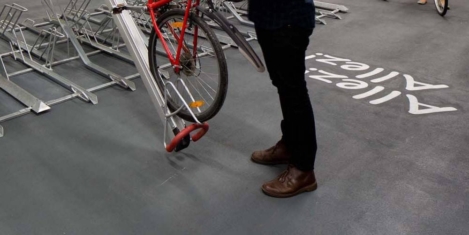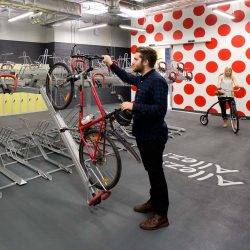July 28, 2017
Men and women report similar work life balance problems
 Contrary to commonly held perceptions and media narratives, women and men report similar levels of work-family conflicts, both in the form of work interfering with family and family interfering with work, according to research published by the American Psychological Association. The study found men are less likely to complain about or address the issue however. Researchers spent several years examining the findings from more than 350 studies conducted over three decades that included more than 250,000 participants from across the world. The results were surprising, said lead researcher Kristen Shockley, PhD, an assistant professor of psychology at the University of Georgia. The research was published online in the Journal of Applied Psychology.
Contrary to commonly held perceptions and media narratives, women and men report similar levels of work-family conflicts, both in the form of work interfering with family and family interfering with work, according to research published by the American Psychological Association. The study found men are less likely to complain about or address the issue however. Researchers spent several years examining the findings from more than 350 studies conducted over three decades that included more than 250,000 participants from across the world. The results were surprising, said lead researcher Kristen Shockley, PhD, an assistant professor of psychology at the University of Georgia. The research was published online in the Journal of Applied Psychology.










 Nearly three quarters of employers in a recent poll say retaining female talent in the workforce is the most important issue in HR in 2017, as changes to childcare funding could impact on the recruitment and retention of working mothers. The research, which was carried out by My Family Care and recruitment firm Hydrogen, found that most employers thought that flexible working and supporting working parents and carers was important to them but strikingly, nearly three quarters (70 percent) rate the issue of retaining female talent after parental leave as the most important issue. However, 60 percent of HR professionals said their company provided no form of coaching or training support for their employees going through the parental transition. When it comes to the success of their family friendly initiatives, flexible working proved to be the most successful, followed by their Childcare Voucher Scheme and then enhanced maternity or Shared Parental pay.
Nearly three quarters of employers in a recent poll say retaining female talent in the workforce is the most important issue in HR in 2017, as changes to childcare funding could impact on the recruitment and retention of working mothers. The research, which was carried out by My Family Care and recruitment firm Hydrogen, found that most employers thought that flexible working and supporting working parents and carers was important to them but strikingly, nearly three quarters (70 percent) rate the issue of retaining female talent after parental leave as the most important issue. However, 60 percent of HR professionals said their company provided no form of coaching or training support for their employees going through the parental transition. When it comes to the success of their family friendly initiatives, flexible working proved to be the most successful, followed by their Childcare Voucher Scheme and then enhanced maternity or Shared Parental pay.
 Nearly three quarters (71 percent) of small and medium enterprises (SMEs) say that staff absenteeism is having a big impact on profitability suggests a new survey from Moorepay. The research found that many UK SMEs are experiencing higher than average absenteeism in their business. According to the Office for National Statistics, the average number of sick days for a UK employee is
Nearly three quarters (71 percent) of small and medium enterprises (SMEs) say that staff absenteeism is having a big impact on profitability suggests a new survey from Moorepay. The research found that many UK SMEs are experiencing higher than average absenteeism in their business. According to the Office for National Statistics, the average number of sick days for a UK employee is 













 The quality of the cycling facilities being offered by many workplaces are currently falling short and risk undermining a Government drive to increase the number of people cycling to work; as according to new research published by the British Council for Offices, 16 percent of office workers claim that inadequate facilities are discouraging them from considering commuting by bike. In April, the Department for Transport stated an aim to double the number of cycling stages, defined as a change in the form of transport as part of a longer “trip” (e.g. cycling to the train station before catching a train to work), from 0.8 billion stages in 2013 to 1.6 billion in 2025. However, new research, commissioned by the British Council for Offices and carried out by Remit Consulting, finds that whilst 83 percent of workplaces in the UK offer some form of bike storage, less than half (47 percent) of this is covered and secure. Improved parking facilities could help increase numbers of those cycling to work, with 16 percent of office workers surveyed saying that better bike storage would encourage them to do so.
The quality of the cycling facilities being offered by many workplaces are currently falling short and risk undermining a Government drive to increase the number of people cycling to work; as according to new research published by the British Council for Offices, 16 percent of office workers claim that inadequate facilities are discouraging them from considering commuting by bike. In April, the Department for Transport stated an aim to double the number of cycling stages, defined as a change in the form of transport as part of a longer “trip” (e.g. cycling to the train station before catching a train to work), from 0.8 billion stages in 2013 to 1.6 billion in 2025. However, new research, commissioned by the British Council for Offices and carried out by Remit Consulting, finds that whilst 83 percent of workplaces in the UK offer some form of bike storage, less than half (47 percent) of this is covered and secure. Improved parking facilities could help increase numbers of those cycling to work, with 16 percent of office workers surveyed saying that better bike storage would encourage them to do so.







